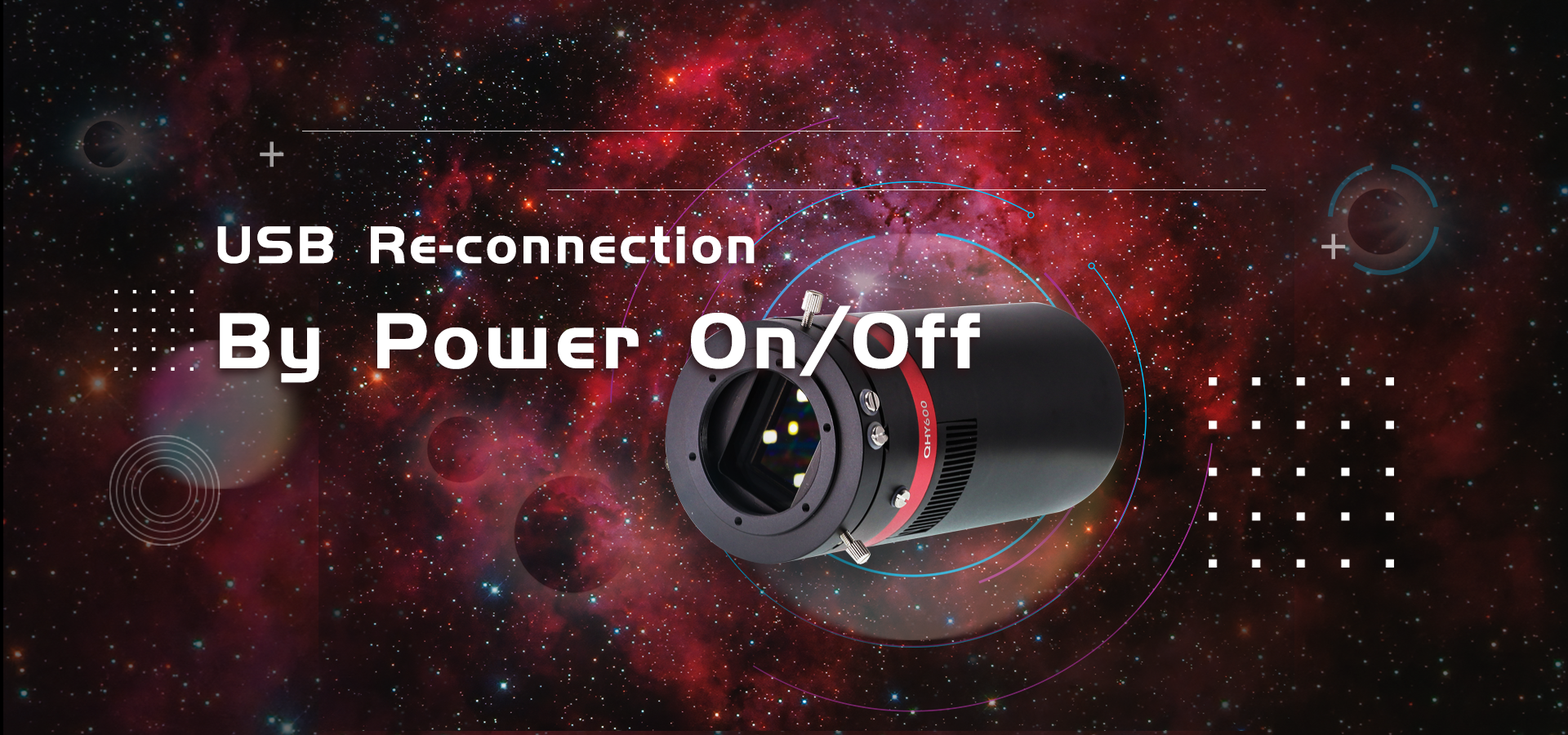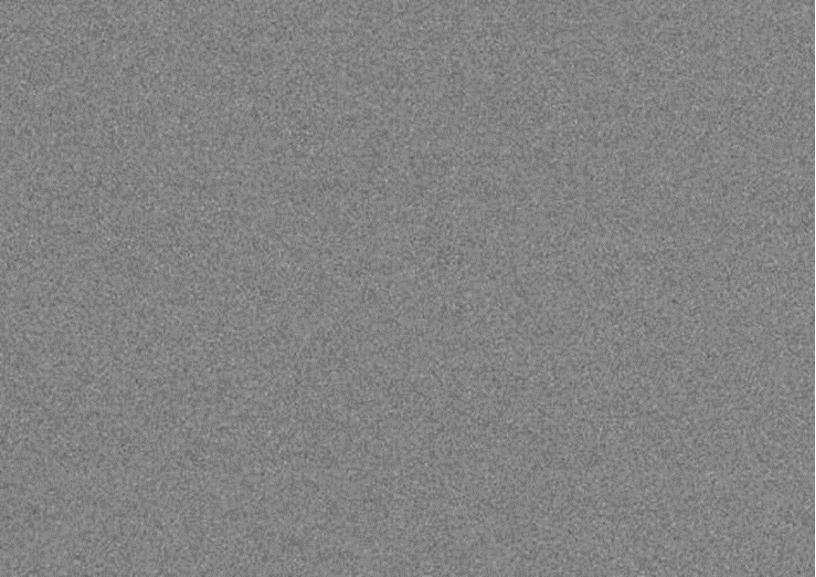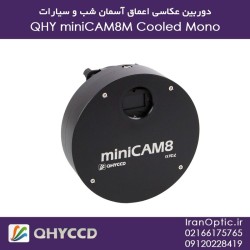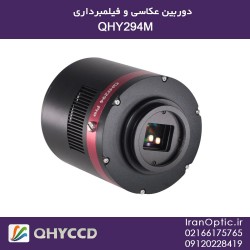فروشگاه تلسکوپ، دوربین عکاسی، ابزارهای رصدی، آسمان نما، رصدخانه، مناسب دانشآموزان و دانشجویان، بهترین قیمتها، ارزان و حرفهای، به همراه مشاوره و راهنمایی پیش و پس از خرید.

هیچ محصولی وجود ندارد
 نمایش بزرگتر
نمایش بزرگتر فقط آنلاین
QHY600PRO
محصول جدید
No reward points for this product.
- Remove this product from my favorite's list.
- Add this product to my list of favorites.
- ارسال به یک دوست
- چاپ
مشخصات
| سیستم خنک کننده ( COOLED ) | دارد |
| رنگ سنسور (رنگی/سیاه سفید) | سیاه و سفید |
| سرعت خروجی درگاه | USB 3.0 Camera |
| نوع سنسور | CMOS |
اطلاعات بیشتر
QHY600PRO has a back-illuminated structure technology, QE is up to 90%. It has a very low readout noise performance, it can get 1.1e- at the highest gain. It has a typical 51ke full-well in high gain readout mode and a typical 80ke readout in extending full-well mode. The camera supports the 2-cms readout mode (sample the same signal twice and averaged on the sensor) and it can get the readout noise 1.3times less than normal readout mode.
QHY600PRO has an extremely good linear response in the whole full-well range. Please check the following document of the QHY600 Linear Test. It also has zero amplifier glow and zero RBI remains performance.
QHY600PRO includes some special versions.
 Native 16 bit A/D: The new Sony sensor has native 16-bit A/D on-chip. The output is real 16-bits with 65536 levels. Compared to 12-bit and 14-bit A/D, a 16-bit A/D yields higher sample resolution and the system gain will be less than 1e-/ADU with no sample error noise and very low read noise.
Native 16 bit A/D: The new Sony sensor has native 16-bit A/D on-chip. The output is real 16-bits with 65536 levels. Compared to 12-bit and 14-bit A/D, a 16-bit A/D yields higher sample resolution and the system gain will be less than 1e-/ADU with no sample error noise and very low read noise.
 BSI: One benefit of the back-illuminated CMOS structure is improved full well capacity. This is particularly helpful for sensors with small pixels. In a typical front-illuminated sensor, photons from the target entering the photosensitive layer of the sensor must first pass through the metal wiring that is embedded just above the photosensitive layer. The wiring structure reflects some of the photons and reduces the efficiency of the sensor. In the back- illuminated sensor the light is allowed to enter the photosensitive surface from the reverse side. In this case the sensor’s embedded wiring structure is below the photosensitive layer. As a result, more incoming photons strike the photosensitive layer and more electrons are generated and captured in the pixel well. This ratio of photon to electron production is called quantum efficiency. The higher the quantum efficiency the more efficient the sensor is at converting photons to electrons and hence the more sensitive the sensor is to capturing an image of something dim.
BSI: One benefit of the back-illuminated CMOS structure is improved full well capacity. This is particularly helpful for sensors with small pixels. In a typical front-illuminated sensor, photons from the target entering the photosensitive layer of the sensor must first pass through the metal wiring that is embedded just above the photosensitive layer. The wiring structure reflects some of the photons and reduces the efficiency of the sensor. In the back- illuminated sensor the light is allowed to enter the photosensitive surface from the reverse side. In this case the sensor’s embedded wiring structure is below the photosensitive layer. As a result, more incoming photons strike the photosensitive layer and more electrons are generated and captured in the pixel well. This ratio of photon to electron production is called quantum efficiency. The higher the quantum efficiency the more efficient the sensor is at converting photons to electrons and hence the more sensitive the sensor is to capturing an image of something dim.
 Zero Amplify Glow: This is also a zero amplifer glow camera.
Zero Amplify Glow: This is also a zero amplifer glow camera.
 TRUE RAW Data: In the DSLR implementation there is a RAW image output, but typically it is not completely RAW. Some evidence of noise reduction and hot pixel removal is still visible on close inspection. This can have a negative effect on the image for astronomy such as the “star eater” effect. However, QHY Cameras offer TRUE RAW IMAGE OUTPUT and produces an image comprised of the original signal only, thereby maintaining the maximum flexibility for post-acquisition astronomical image processing programs and other scientific imaging applications.
TRUE RAW Data: In the DSLR implementation there is a RAW image output, but typically it is not completely RAW. Some evidence of noise reduction and hot pixel removal is still visible on close inspection. This can have a negative effect on the image for astronomy such as the “star eater” effect. However, QHY Cameras offer TRUE RAW IMAGE OUTPUT and produces an image comprised of the original signal only, thereby maintaining the maximum flexibility for post-acquisition astronomical image processing programs and other scientific imaging applications.
 Anti-Dew Technology: Based on almost 20-year cooled camera design experience, The QHY cooled camera has implemented the fully dew control solutions. The optic window has built-in dew heater and the chamber is protected from internal humidity condensation. An electric heating board for the chamber window can prevent the formation of dew and the sensor itself is kept dry with our silicon gel tube socket design for control of humidity within the sensor chamber.
Anti-Dew Technology: Based on almost 20-year cooled camera design experience, The QHY cooled camera has implemented the fully dew control solutions. The optic window has built-in dew heater and the chamber is protected from internal humidity condensation. An electric heating board for the chamber window can prevent the formation of dew and the sensor itself is kept dry with our silicon gel tube socket design for control of humidity within the sensor chamber.
 Cooling: In addition to dual stage TE cooling, QHYCCD implements proprietary technology in hardware to control the dark current noise.
Cooling: In addition to dual stage TE cooling, QHYCCD implements proprietary technology in hardware to control the dark current noise.
The camera is designed to use the +12V to reboot the camera without disconnecting and reconnecting the USB interface. This means that you can reboot the camera simply by shutting down the +12V and then powering it back on. This feature is very handy for remote controlling the camera in an observatory. You can use a remotely controlled power supply to reboot the camera. There is no need to consider how to reconnect the USB in the case of remote control.
You may find some types of thermal noise can change with time in some back-illuminated CMOS cameras. This thermal noises has the characteristic of the fixed position of typical thermal noise, but the value is not related to the exposure time. Instead, each frame appears to have its own characteristics. The QHY600 / 268C uses an innovative suppression technology that can significantly reduce the apparent level of such noise.
It is common behavior for a CMOS sensor to contain some horizontal banding. Normally, random horizontal banding can be removed with multiple frame stacking so it does not affect the final image. However, periodic horizontal banding is not removed with stacking so it may appear in the final image. By adjust the USB traffic in Single Frame mode or Live Frame mode, you can adjust the frequency of the CMOS sensor driver and it can optimize the horizontal banding appeared on the image. This optimized is very effective to remove the periodic banding in some conditions.
A typical Periodic Horizontal Noise under certain USB_TRAFFIC values.
After Adjusting the USB Traffic to avoid the periodic horizontal noise.
| Model | QHY600PRO |
| CMOS Sensor | IMX455 |
| Mono/Color | Both Available. Monochrom version uses the -K industry level sensor. Color version uses the -C consumer level sensor |
| FSI/BSI | BSI |
| Pixel Size | 3.76um x 3.76um |
| Effective Pixel Area | 9576*6388 (9600*6422 with overscan and optically black area) |
| Effective Pixels | 61.17 Megapixels (effective area. |
| Sensor Size | Full Frame 36mm x 24mm |
| A/D Sample Depth
| 16-bit (0-65535 levels) at 1X1 binning 18-bit at 2X2, 19-bit at 3X3, 20-bit at 4X4 software binning *QHY600 uses the software digital binning for 2*2binning. With digital sum, 2*2binning will be four 16-bit summed then it is 18-bit. |
| Full Well Capacity (1×1, 2×2, 3×3) | Standard Mode >51ke- / >204ke- / >408ke- Super Full Well Mode >80ke- / >320ke- / >720ke- |
| Full Frame Rate | USB3.0 Port Image Transfer Speed Full Frame Size: 4.0FPS (8-bit output) Full Frame Size: 2.5FPS (16-bit output) 7.2FPS at 9600×3194, 22.5FPS at 9600×1080, 28FPS at 9600×768, 47FPS at 9600×480, 160FPS at 9600×100, Fiber Port Image Transfer Speed Full Frame Size: 4FPS (16-bit mode), 10FPS (14-bit mode) |
| Readout Noise | 1.0e- to 3.7e- (Standard Mode) |
| Dark Current | 0.0022e-/p/s @ -20C 0.0046e-/p/s @ -10C |
| Exposure Time Range | 40us – 3600sec |
| Unity Gain* | 25 (Extended Full Well Mode) * *With the improvement of the CMOS technology, the 16bit CMOS camera has been released, like QHY600/268/411/461. For these cameras, even in lowest gain it has beyond the requirement of unit gain (less than 1e/ADU due to sufficient samples) So you can directly set gain0 as start. Please note QHY600/268C/411/461 has extend full well mode. In this mode you still need to find out the unit gain position. |
| Amp Control | Zero Amplifer Glow |
| Firmware/FPGA remote Upgrade | Supported. Via Camera USB Port |
| Shutter Type | Electric Rolling Shutter |
| Computer Interface | USB3.0 |
| Built-in Image Buffer | 2GBytes(16Gbit)DDR3 memory |
| Hardware Frame Sequence Number | Supported |
| Cooling System | Dual Stage TEC cooler: – Long exposures (> 1 second) typically -35C below ambient – Short exposure (< 1second) high FPS, typically -30C below ambient (Test temperature +20°) Water Cooling Version: -45C below ambient with normal temperature water in long exposures up to -60C below ambient with cold liquid |
| Recommended flow rates for water-cooled versions | 1.6ml/s |
| Sensor Chamber Humidity Sensor | Yes. Support both humidity and pressure readout |
| Optic Window Type | AR+AR High Quality Multi-Layer Anti-Reflection Coating |
| Anti-Dew Heater | Yes |
| Telescope Interface | M54/0.75 |
| Back Focal Length | 17.5mm (±0.2) |
| Weigth | PH Version: 850g* |
| Power | 40W/100% 20W/50% 13.8W/0% |
QHY600 Series have Pro versions and customization for professional astrophotography or scientific uses. They are:
QHY600Pro (Professional Version, mainly for secietific projects);
QHY600SBFL (Short Back Focal Length Customization, for astrographers and scientific projects both, support PH and Pro Versions);
QHY600LQ (Liquid Cooling Customization, maily for scientific projects, support PH and Pro Versions)
Here we only list differnt specs due to different models. Please check QHY600 PH Specification list for general information.
| Model | QHY600PH | QHY600Pro | QHY600SBFL Short Back Focal Length Version | QHY600LQ Liquid Cooling Version |
| Frame Rate | USB3.0 Full Frame Size: 4.0FPS (8-bit output) Full Frame Size: 2.5FPS (16-bit output) 7.2FPS at 9600×3194, 22.5FPS at 9600×1080, 28FPS at 9600×768, 47FPS at 9600×480, 160FPS at 9600×100 | USB3.0 & 2*10Gigabit | ||
| Computer Interface | USB3.0 | 2*10Gigabit Full Frame Size: 4.0FPS (16-bit output) | ||
| GPIO | N/A | 6PIN, high speed with flexible FPGA conntrol. Can be used as trigger in/out, multiple camera sync capture control, high precision GPS time measurement etc. | ||
| Cooling System | Dual Stage TEC cooler: – Long exposures (> 1 second) typically -35C below ambient – Short exposure (< 1second) high FPS, typically -30C below ambient (Test temperature +20°) | -45 degrees in continuous mode and single frame mode with an exposure time greater than 1 second. | ||
| Back Focal Length (Intercept from the CMOS chip to the top of the camera) | 17.5mm (without CAA) This intercept does not include CAA. If CAA is used, it increases by 6mm (23.5mm total). | 12.5mm when connected with QHYCFW. The actual BFL is 14.5mm. Since most uses will match CFW with monochrome cams, please take 12.5mm as major reference. | ||
| Weight | 850g | 965g | 870g | TBD |
QHY600PRO has two special versions. The water cooling version and the ultra-short back focal length version.
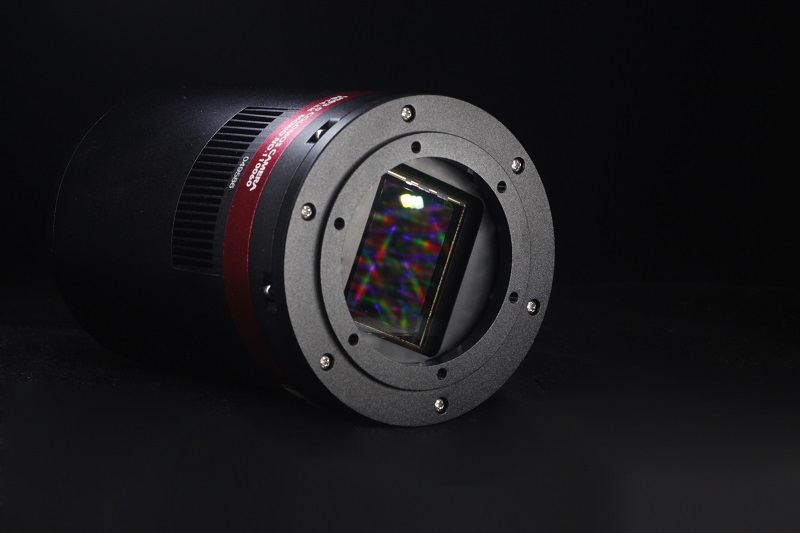
QHY600 Short back-focus version (QHY600 SBFL) is specially designed for DSLR lens users or those who has special requirment of short back focal length. This version has a special front part version which has 7mm B.F.L only. The front part includes six M2.5 screw holes arranged on a 80mm diameter roundness.

On the side of this adapter there is a 4mm hole to connect air pump through plastic pipe in case of the dewing glass when necessary.
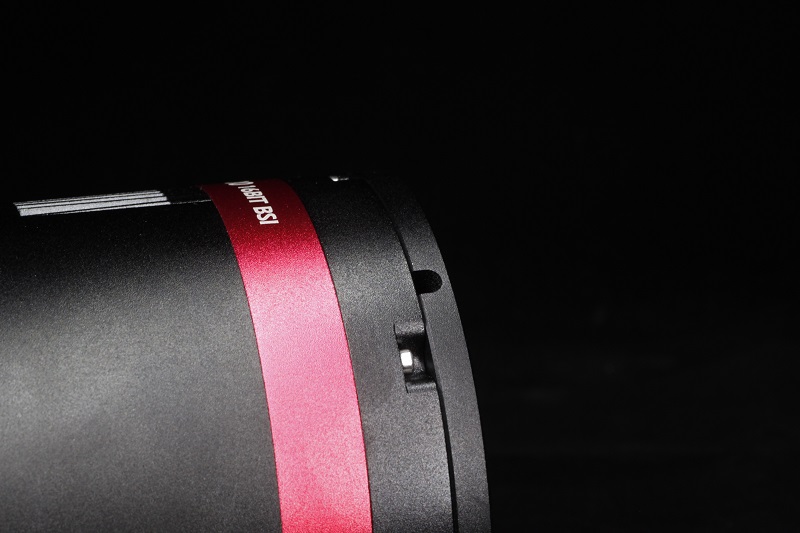



 Compared with air cooling, liquid cooling has the following important advantages.
Compared with air cooling, liquid cooling has the following important advantages.
No vibration. Air-cooling requires the use of a fan inside the camera that may induce small vibrations. Even the highest quality fan cannot avoid some effect on the FWHM (full width at half maximum) of stellar images on certain telescopes. Long focal length optical systems are more sensitive to this effect. However, water cooling achieves temperature reduction through the slow flow of water. There is no moving mechanical component to cause vibration of the camera, eliminating any negative effect on the image.
QHY600PRO has two data interfaces: USB3.0 interface and 2*10Gbps fiber interface. With 2*10Gbps fiber interface, it can get 4FPS @ 16bit full resolution and 10FPS @ 14bit full resolution frame rate under live streaming mode. The QHY600PRO also supports the Trig in/out function and GPS function.
 The product has a built-in 2*10Gbps fiber socket. It can work with the QHYCCD PCIE2.0x8 data grabber card. The fiber interface is for the requirement of the professional obs. It will give the following advantages than the USB3.0 interface. Then what is the benefit of the Fiber Interface?
The product has a built-in 2*10Gbps fiber socket. It can work with the QHYCCD PCIE2.0x8 data grabber card. The fiber interface is for the requirement of the professional obs. It will give the following advantages than the USB3.0 interface. Then what is the benefit of the Fiber Interface?
- Higher data rate. One 10Gigabit Fiber can transfer maximum 10Gbps data. The actual data rate can get about 800MBytes/s. While the USB3.0 is 5Gbps and the actual data rate is about 350MByte/sec. Use the two 10Gigabit fiber can get about 1.6GBytes/s speed. The IMX455 sensor has the high-speed mode like the 10FPS 14bit full resolution mode and 30FPS 8K VIDEO mode. The data rate of these modes is much more than USB3.0.
- Very long transfer distance. The fiber is hundreds of times longer than USB3.0. USB3.0 can only transfer 3meter to 5meter. For longer distances, it needs the extender cable but can just get 10meter to 15meter. While the Fiber can transfer 300meter directly by default optic module; with the long-distance optic module, it can transfer up to 40km.
- Solid stable and no affected by EMI. One major factor that causes the camera to hang is the EMI issue. The USB3.0 transfer maybe gets effect by the EMI in the transfer patch. Like the static and other high-power device emitted. The EMI will cause the transfer data packet to get a CRC error and cause the image loss. A long USB cable is easier to get this problem. Light can not be affected by the EMI. So with the fiber transfer, it will get everything very stable.

QHY600 PRO

QHY600 Ultra Short B.F.L Version

مشخصات
Reviews
مشخصات فنی CCD و CMOS | |
| نوع سنسور | CMOS |
| رنگ سنسور (رنگی/سیاه سفید) | سیاه و سفید |
| سیستم خنک کننده ( COOLED ) | دارد |
| سرعت خروجی درگاه | USB 3.0 Camera |
No customer reviews for the moment.




